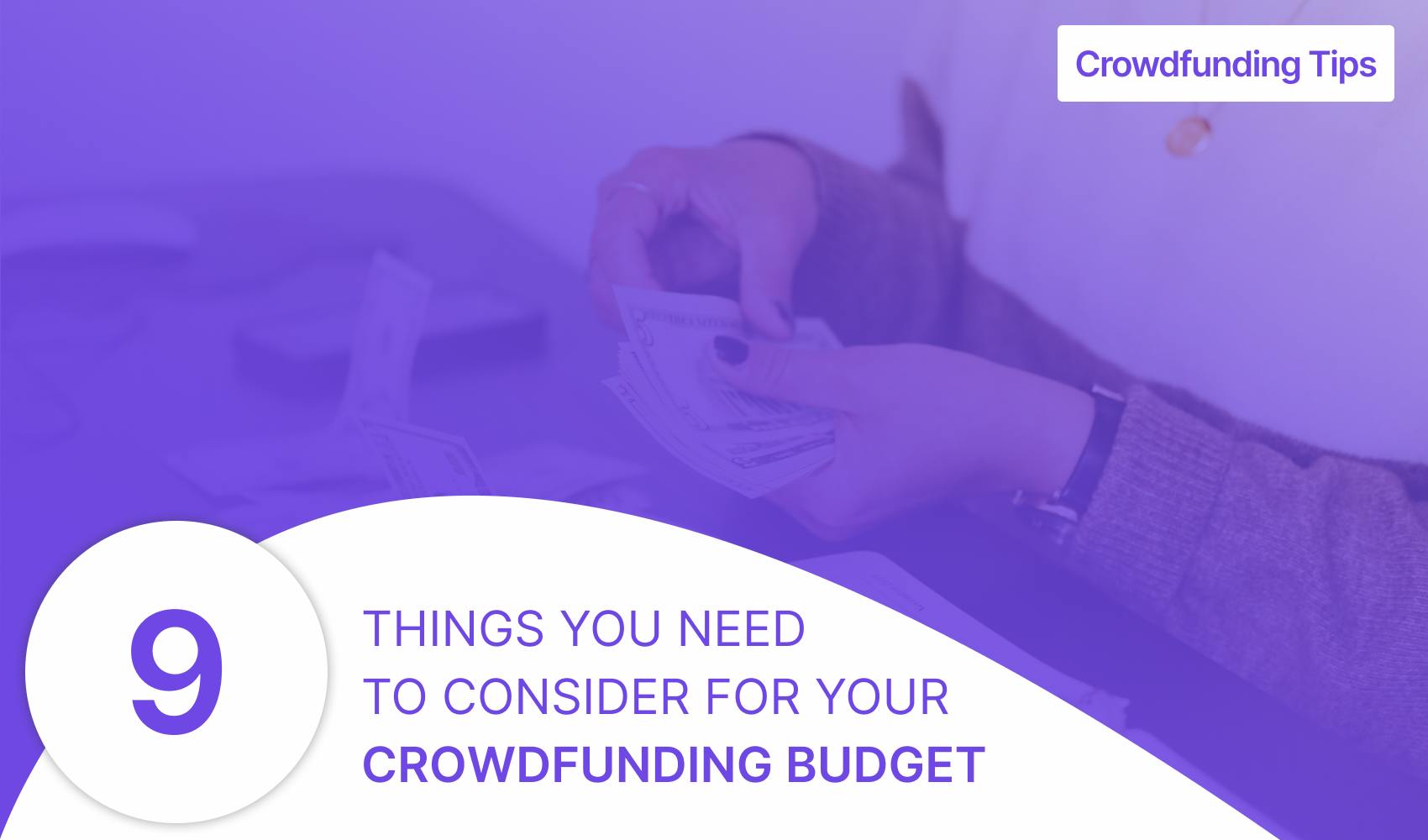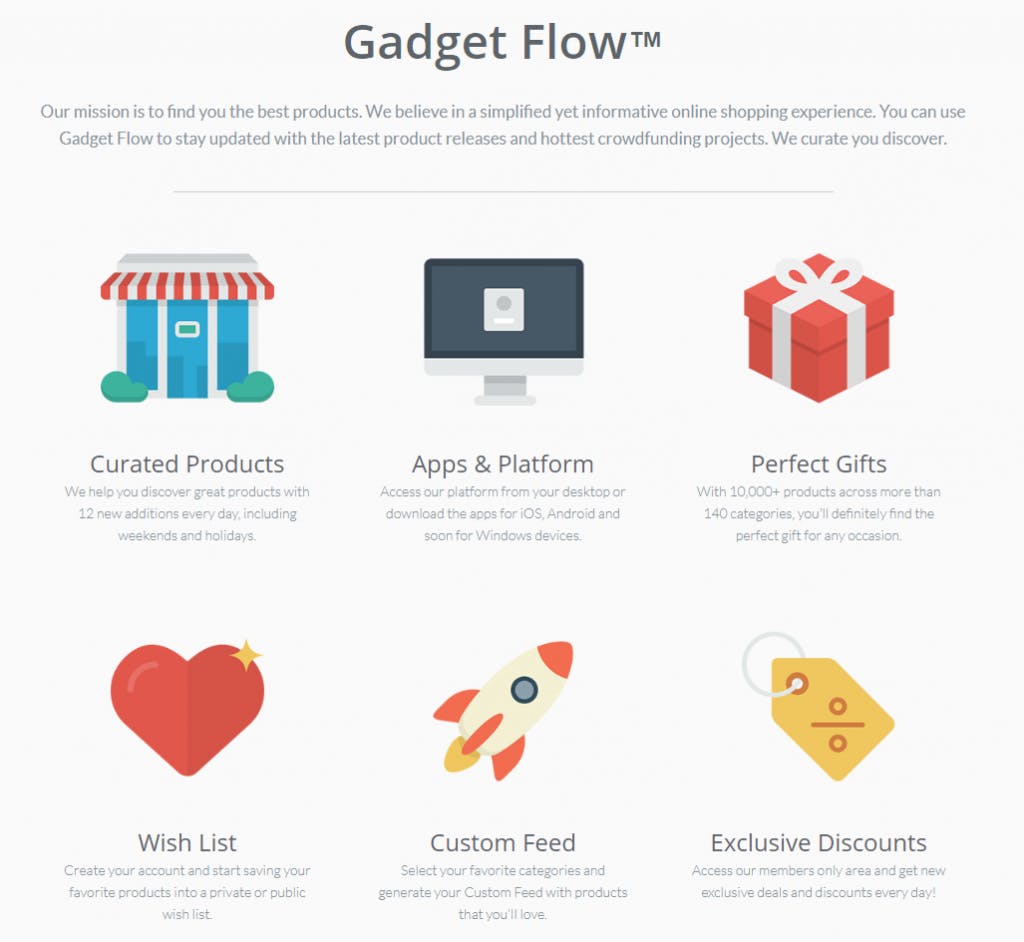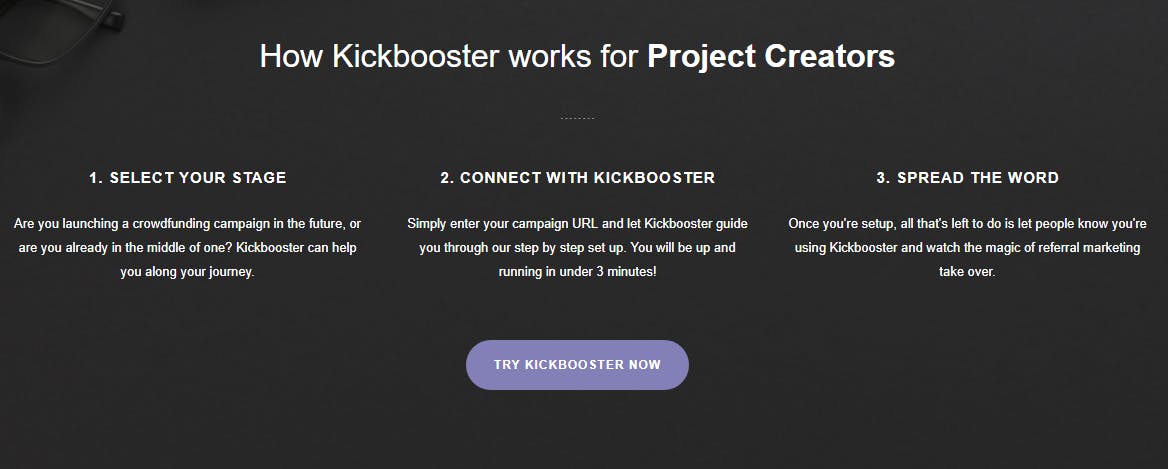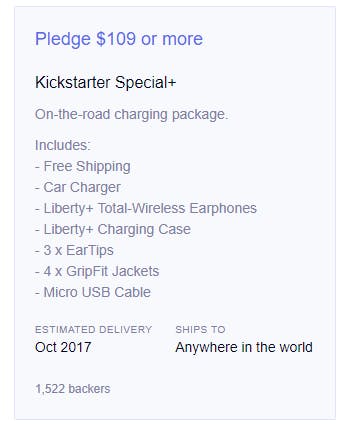9 Things You Need to Consider for Your Crowdfunding Budget

So, you’re starting a crowdfunding campaign- Congrats!
It’s a tough but rewarding experience that not only brings in money (hopefully), it also builds a brand, allows you to engage with your audience, and can even develop into a business. Sitting down and creating a smart crowdfunding budget will help your campaign run as smoothly as possible.
There’s wise ways to spend money on your campaign and…some not so wise ways. We have the breakdown you need to succeed!
1. Marketing
Great promotional material is a must for a successful campaign and you need to have room for it in your crowdfunding budget- no cutting corners!
Putting your campaign on Kickstarter or Indiegogo isn’t enough- it’s up to you to make sure people are seeing your campaign! There are thousands of campaigns on Kickstarter and Indiegogo and great marketing is a sure way to get your campaign to stand out from the crowd.
You can do some marketing yourself on social media, but there are some amazing companies out there to help you along the way.
Some great resources out there that can get your campaign noticed are:
Gadgetflow is a website that thousands of people refer to for cool products, while FundedToday is a marketing agency that specializes in crowdfunding campaigns. Both will work to get as many eyes as possible on your campaign!

In terms of cost, most marketing companies charge between 15-20% of funds raised although some simply offer a flat rate. Be wary of marketing agencies that promise you millions of backers or instant success.
There’s no guarantees in this industry, and you want the best and most trusted sources.
Do your research, look for case studies and reviews of other campaigns they’ve worked on- you don’t want to be scammed!
2. Project Video & Photos
The video is always the first thing people check out, and photos are close behind.
People want to see your products in action, and high quality videos and photos are the best way to highlight how your product works and why people need them! For those on a tight crowdfunding budget, you could try making the video yourself. There are some great programs out there to shoot and edit videos that are fairly simple and inexpensive.
Some programs we love are
- iMovie (Mac, $15),
- Adobe Premiere Pro ($19.99/month), and
- Techsmith Camtasia ($199 for both PC and Mac).
But because videos can make or break a campaign, we recommend leaving it to the pros. VideoPixie allows you to post info about your campaign and professionals can bid on your project. Costs range from $1,500- $25,000.
This Kickstarter campaign’s viral video helped raise over a million dollars!

Thinking of skipping the video all together? Bad move.
Campaigns with videos are much more successful than those without (50% vs 30% without).
They’re a great way to show off your products, and tell your story. High quality images are also a great way to show off your products! If you have a decent camera and some editing experience; go for it! If not, hiring a professional photographer can really make a difference in the way your products are presented.
3. Referral Programs
Referral programs are a smart move to get as many eyes as possible on your campaign.
If you’re not familiar with referral programs, they allow people to earn cash for spreading the word about your campaign. This is great news because it allows you to tap into networks that you wouldn’t have access to otherwise! Costs usually include a monthly fee plus 3-5% payment processing fees.
Kickbooster is the world’s first referral program for crowdfunding campaigns. It provides incentive for affiliates (aka boosters) to spread the word about your campaign to help your campaign go viral! For a small fee of $29 a month, you can tap into networks outside your own. Don’t be afraid to reach out to high-traffic media outlets or blogs; you never know who will be interested!

4. Funding Goal
Setting a funding goal is no simple task!
It may seem straightforward- how much do you need to raise to pay for your project? But, there are fees, taxes and unforeseen costs to consider. You want to give yourself room to breathe, while keeping the goal reasonable so it’s possible to achieve.
Write down everything you can think of that you’ll be paying for, add it up and then add some wiggle room. There will always be costs and fees that you didn’t anticipate when you figured out your crowdfunding budget. Or things could go wrong and you’ll need some extra cash to cover expenses.
Also, raising more than your target doesn’t mean you have money to spare. More backers = more pre-sales = more manufacturing costs = more postage, etc.
The takeaway?
If you need $10,000 to fund your project, don’t set your funding goal to $10,000! Look for projects similar to yours if you need some help gauging how much you’ll need.
5. Crowdfunding Platform Fees
No surprise here, the platform you use to bring your project to life is going to cost you.
But the fees do add up and knowing exactly what these fees are will help you budget your precious cash. Kickstarter and Indiegogo are the big names in the biz, so we’ll focus on those two.

- Platform fee: 5% of all funds raised
- Payment Processing fee: 3-5%, plus 20 cents per pledge

- Platform fee: 5% of all funds raised
- Payment processing fee: 3-5%
- Campaigns with bank accounts outside the US will be charged a one-time $25 transfer fee
Fees may differ based on funding type
6. Pledge Management
Depending on the volume of backers, you may consider using a Pledge Manager tool to help manage your orders. Pledge managers often have tiered pricing, depending on what you’re looking to get out of the service. Pricing will vary but some will take a percentage of funds raised through the campaign and through the survey, and others will charge a per backer rate plus a percentage of funds raised through the survey.
7. Taxes
Wait. What? Yup, you may be surprised to hear you need to consider taxes in your crowdfunding budget.
And no, not sales tax!
Crowdfunding money is considered income and has to be accounted for in your personal or business taxes come our favorite time of year, tax time.
The amount you owe is going to vary depending on a number of factors in your campaign, and where you live. Each country has its own set of rules and regulations. You’re able to deduct certain expenses related to the production of your products, but this also varies per country.
The key thing here is to save as many receipts and copies of everything you’re purchasing and sending out.
Have a folder or heck, a box, to keep all your necessary stuff in one place. But hey, we’re not tax experts so we recommend researching more about the tax regulations about crowdfunding in your country or contacting a tax professional in your area.
Check out Kickstarter’s tax page for more info.
8. Manufacturing
How the heck are you going to make your awesome products?
There’s a ton of options out there, but it doesn’t mean that they’re all great. Choosing a manufacturer is a big step and choosing the wrong one could tank your entire project.
Talk to friends, family, acquaintances, industry contacts- anyone who has experience with manufacturers.
Check out reviews online too!
Once you’ve found some and have done your own research on them, reach out for quotes. Explain your product and send photos so they clearly understand what they’ll be working with. Costs are going to vary depending on your products, and cheaper isn’t always better.
9. Shipping
The #1 issue we hear about is shipping. Hands down.
This is a huge expense and one of the most important in your crowdfunding budget; people want to get their stuff! This often underestimated cost can cause problems if you’re not fully prepared.
We recommend charging for shipping during your campaign rather than in the post campaign survey. Including your shipping costs in the reward levels ensures there’s no unwanted surprises later on.
Even if you’re offering free shipping, make it very apparent.

Work out the exact details of how much each product will cost to ship to each country you want to ship to.
Most shipping companies charge based on the weight of the package; keep this in mind when determining where you want to ship.
Remember to include costs for boxes/packaging, tape, labels and whatever else you’re using to send your products on their way!
You also need to accommodate customs fees that may add up for international shipping, so do your research and make sure you’re covering yourself for the extra hassle and expenses. If that’s not something you’re covering, let backers know they’ll be responsible for these additional costs so they’re not surprised when the time comes.
Some great shipping companies we love are
Each of them specialize in crowdfunding and e-commerce shipping so they know what they’re talking about!
As much as you plan until you can’t plan anymore, life happens. Things get messy and stuff gets lost. Always give yourself some wiggle room in case those ‘oh shit’ moments happen. And they will- but that’s ok! Nobody said your crowdfunding budget has to be perfect but keeping organized, and anticipating as many costs as possible will put you on the right path to fulfilling orders, keeping backers happy and rocking your awesome campaign.
Learn more about Kickbooster's referral marketing tool and Pledge Manager.

